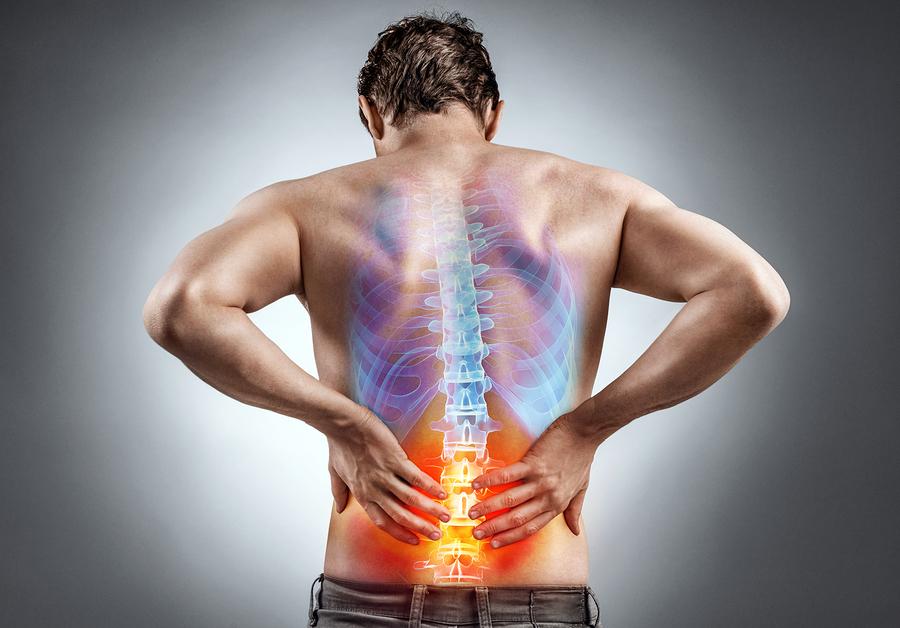Pain is a natural part of life and is something that certainly everyone experiences to some degree from time to time. The pain that goes hand in hand with orthopedic problems can vary widely in severity, and can’t always be managed in the same way.
Classifications of Pain
Pain is most often referred to as either acute or chronic. Acute pain is generally the less serious of the two types, and will naturally subside as the healing process develops. Chronic pain, on the other hand, is persistent and long-term.
Unresolved acute pain has the potential to evolve into chronic pain over time, making the issue much more serious and harder to resolve. This is one of many reasons why it is important to manage acute pain when it first presents.
Experiencing Pain
Data shows that approximately 80% of post-operative patients experience some kind of acute pain. Furthermore, up to 20% of these patients experience severe pain. These figures have largely remained at similar levels over the last few decades.
The Importance of Pain Management
When pain is not managed adequately it can be of detriment to the patients physical and emotional wellbeing in several ways.
When pain is experienced continuously over time, such as is the case with chronic pain, then chemicals can be released in the brain that lead to reduced immune system activity. If this is happening following a surgical procedure then it can inhibit how efficiently the patient recovers from their surgery.
Pain can also limit the mobility of a patient, which then makes their care more difficult – both for the healthcare professionals involved as well as those from their support network (friends and family). Limited mobility following surgery can contribute to the onset of all kinds of additional health complications, such as deep vein thrombosis and pneumonia.
Re-admissions or prolonged hospital stays due to pain related complications can negatively affect the health of the patient, as well as increase the cost of their treatment. Both of these complications are of course best off avoided!
Anxiety and Depression
Both anxiety and depression can be experienced when ongoing pain issues are not managed effectively. When there is no real relief from the pain then the patients wellbeing will inevitably be affected. Feelings of hopelessness and frustration are certainly common in these instances, which can quickly manifest as anxiety and / or depression.
Pain and Stress
When pain is present in the body, the endocrine system will release excess stress hormones. This can have several harmful consequences. When a patient experiences stress they are less likely to heal in an optimum way and their recovery process can be much harder to manage in general.
Orthopedic Standards of Care
Standards of care exist throughout the medical world, and the orthopedic field is no exception. These standards ensure that pain is assessed promptly and managed accordingly. When these standards are breached, or seen to not have been adhered to properly, then the clinician is in fact at risk of legal action. Liability can lie with the entire hospital as an organization, as well as individual healthcare professionals.
Assessing Pain
Where pain exists it is essential to assess the pain before a course of action is decided upon. Lack of adequate pain assessment will be a huge obstacle to resolving the problem and alleviating the patients situation.
Although there are varying guidelines when it comes to pain assessment, one of the most important things is that assessments are carried out regularly to determine any changes. Patients will often be asked to rate their pain levels out of ten. This can be a helpful indicator of changes in the body.
Noting the patients pain history should also form a part of a pain assessment. This should include any previous pain management methods, and whether the patient has any history of substance abuse.
Common Medications
When it comes to acute pain management, opioids are the most commonly prescribed painkiller. Estimates suggest that in up to 90% of cases of cancer-related pain, opioids are adequate to reduce pain to manageable levels.
Vicodin has long been one of the most popular painkillers in the United States. However, this is an incredibly addictive drug that is said to be among the most widely abused prescription medications. For this reason many healthcare professionals prefer to prescribe different medications and also to suggest non-medication treatments.
Non-Medication Pain Management
There are certain pain management treatment paths that do not involve pharmaceutical medication. Some patients choose instead to utilise massage, distraction techniques and even imagery in order to combat their pain. The patient may choose to use any of these methods on their own or in conjunction with medication.
The decision to treat pain without medication has to ultimately come from the patient and will always be monitored closely by the patients primary physician.
References
2) http://time.com/3663907/treating-pain-opioids-painkillers
Related Posts
Cigarettes May Inhibit Inflammation Treatments
Axial spondyloarthritis, also known as AxSpa, is a chronic…









